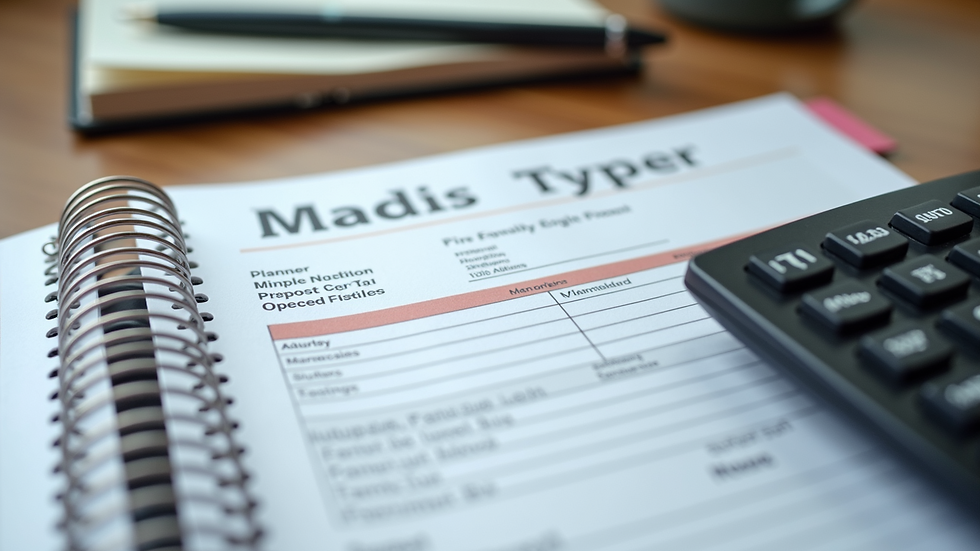How to Save on Childcare Costs with a Dependent Care FSA
- Kids Edu Caring Place Academy Coach

- Aug 4
- 4 min read
Childcare expenses can be a significant part of a family’s budget. Finding ways to reduce these costs can make a big difference in your financial health. One effective method to save money on childcare is by using tax-advantaged accounts and programs designed specifically for dependent care. This article will guide you through practical steps and important information on how to maximize your childcare tax savings.
Understanding Childcare Tax Savings Options
Childcare tax savings come in various forms, including tax credits, deductions, and flexible spending accounts. These options help reduce the amount of money you spend on childcare by lowering your taxable income or providing direct tax credits.
One popular option is the Child and Dependent Care Credit, which allows you to claim a percentage of your childcare expenses on your tax return. The percentage depends on your income, and the credit can cover up to 35% of eligible expenses.
Another option is a flexible spending account (FSA) specifically for dependent care. This account lets you set aside pre-tax dollars from your paycheck to pay for childcare expenses. Using an FSA reduces your taxable income, which means you pay less in taxes overall.

How a Dependent Care FSA Can Help You Save
A dependent care fsa is a special account offered by many employers that allows you to contribute money before taxes to pay for eligible childcare expenses. This can include daycare, preschool, before and after school programs, and even some summer camps.
Here’s how it works:
You decide how much money to contribute to the account at the beginning of the year.
Your employer deducts this amount from your paycheck before taxes.
You use the funds in the account to pay for qualified childcare expenses.
Because the money is pre-tax, you save on federal income tax, Social Security tax, and Medicare tax.
For example, if you contribute $5,000 to a dependent care FSA and you are in a 20% tax bracket, you could save up to $1,000 in taxes. This is a direct saving on your childcare costs.
It’s important to note that you must use the money within the plan year or you may lose it, so plan your contributions carefully.

Is dependent care FSA 5000 per child?
Many people wonder if the $5,000 limit on dependent care FSAs applies per child or per household. The answer is that the maximum contribution limit is $5,000 per household, not per child. This means that if you have two or more children, the total amount you can contribute to the dependent care FSA is still $5,000 combined.
If you are married and file separately, the limit is lower, typically $2,500 per spouse. This limit is set by the IRS and applies to all dependent care FSAs combined.
Understanding this limit is crucial for planning your childcare expenses and maximizing your tax savings. If your childcare costs exceed $5,000, you may want to explore other tax credits or deductions to cover the additional expenses.

Tips for Maximizing Your Childcare Tax Savings
To get the most out of your childcare tax savings, consider these practical tips:
Estimate your childcare costs accurately - Before enrolling in a dependent care FSA, calculate your expected childcare expenses for the year. This helps you avoid over-contributing and losing unused funds.
Keep detailed records - Save receipts and invoices for all childcare payments. You will need these for tax filing and to verify expenses if requested.
Coordinate with your spouse - If you are married, coordinate your childcare tax savings strategies to maximize benefits. Decide who will claim the Child and Dependent Care Credit and how to split FSA contributions.
Use the FSA funds promptly - Remember that dependent care FSAs often have a "use-it-or-lose-it" policy. Plan your payments so you use the funds within the plan year.
Check your employer’s plan details - Not all employers offer dependent care FSAs, and plan rules can vary. Review your employer’s plan documents carefully.
By following these steps, you can reduce your childcare expenses significantly and keep more money in your pocket.
Other Childcare Tax Savings to Consider
Besides the dependent care FSA and the Child and Dependent Care Credit, there are other ways to save on childcare costs through tax benefits:
Child Tax Credit: While not directly related to childcare expenses, this credit provides financial relief for families with children under 17.
State-specific programs: Some provinces and territories offer additional childcare subsidies or tax credits. Check your local government’s website for details.
Registered Education Savings Plans (RESPs): Although primarily for education savings, RESPs can help you plan for future childcare and schooling costs.
Combining these options with a dependent care FSA can maximize your overall savings and ease the financial burden of childcare.
By understanding and utilizing childcare tax savings options like the dependent care fsa, you can effectively reduce your childcare expenses. Careful planning, record-keeping, and coordination with your employer and tax professional will help you make the most of these benefits. Start exploring your options today to keep more of your hard-earned money while ensuring quality care for your children.



Comments